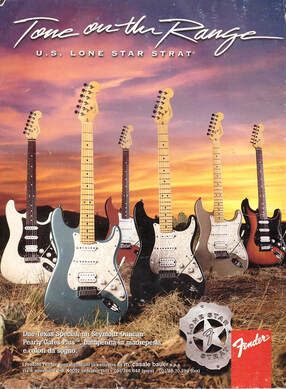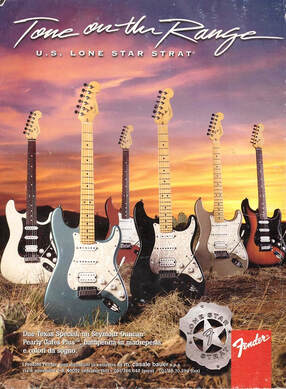In the '90s Fender catalog was expanded with the introduction of new models that aimed to satisfy the desires of all guitarists. At a time when rock was pushed to extremes, the greatest need was to have instruments based on the Stratocasters which could better adapt to the new musical trend. Single coils no longer seemed sufficient for this purpose.
|
The Lone Star Strat, with a pearloid or tortoise shell pickguard, presented in 1996, was the first of the Hot Rodded American Standard Series. In the '90s guitarists frequently bought an American Standard and then mounted a humbucker at the bridge. Consequently, Fender decided, for the first time, to mount a humbucker, a slightly modified Seymour Duncan Pearly Gates, on the classic lines of the Strat. At the neck and in the central positions, the Lone Star Strat had Texas Special single coil pickups.
After the great success of the Lone Star, Fender introduced a Stratocaster with double humbucker: the Big Apple Strat, produced between 1997 and 2000, which was equipped with a slightly modified Pearly Gates pickup in the bridge position and a Seymour Duncan '59, also slightly modified, at the neck. The Roadhouse Strat, produced between 1997 and 2000, was the third Hot Rodded Stratocaster, and was equipped with three Texas Specials. |
In 2000, when American Standard Series was replaced by American Series, Hot Rodded American Standard Series was replaced by the American Hot Rodded Series and the American Strat Texas Special, the American Fat Strat Texas Special and the American Double Fat Strat took place of, respectively, the Roadhouse, Lone Star and Big Apple models. However, this series didn’t last long, only until 2003, when it was incorporated into the new American Series. Now Hot Rodded guitars no longer had a specific name, but they were simply called American Stratocaster HH and American Stratocaster HSS.
Antonio Calvosa





